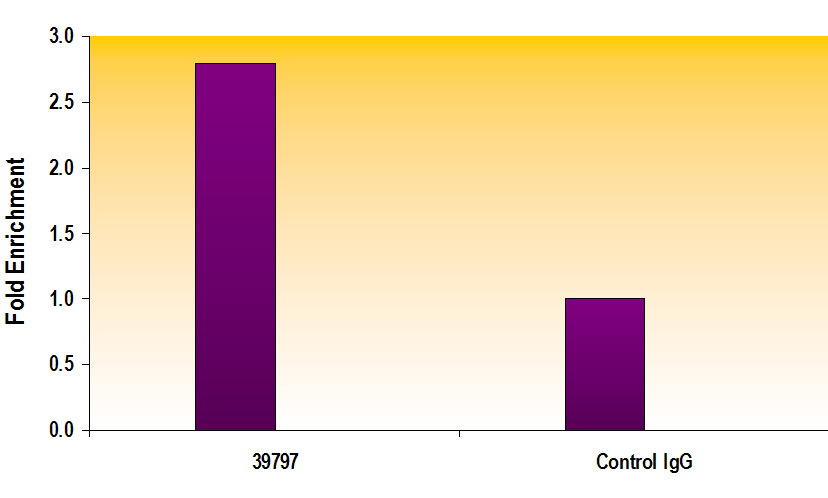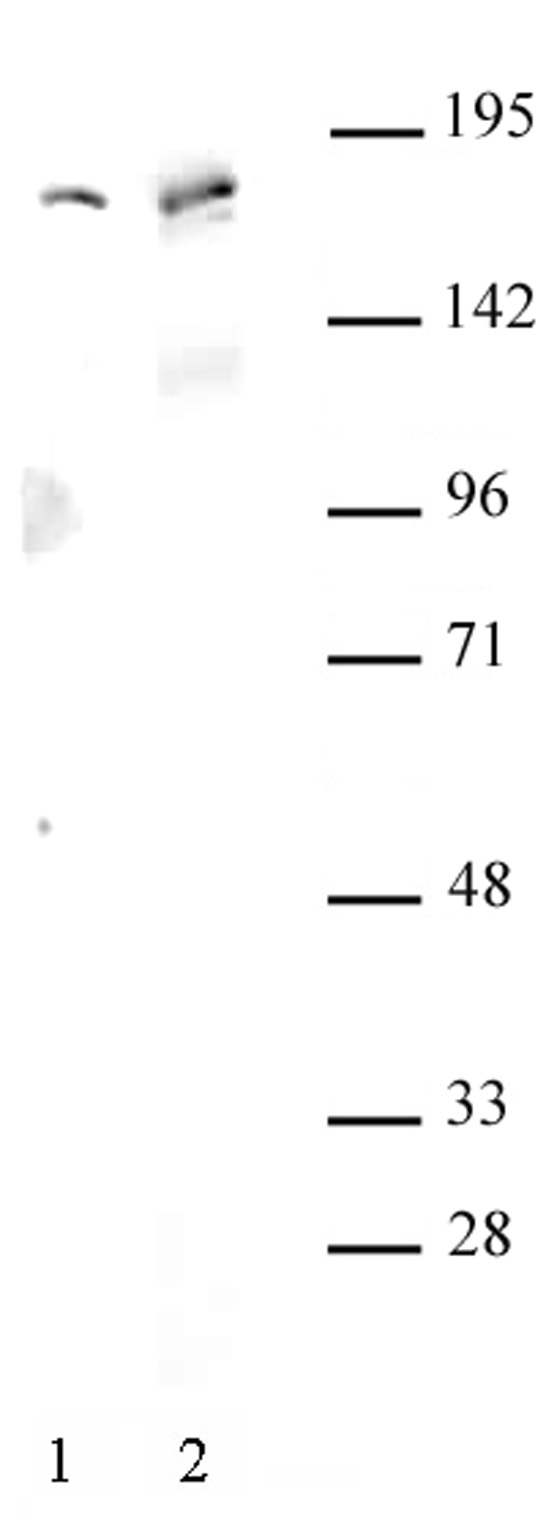AIB1 / SRC-3 antibody (pAb)
Host / Isotype
Rabbit / IgG
Reactivity
Human
Applications
ChIP, WB
Cat No : 39797,39798 39797
Synonyms
验证数据展示
产品信息
| Tested Applications |
ChIP, WB
Applications Validated by Active Motif: ChIP: 10 ul per ChIP WB: 1:500 - 1:2,000 dilution |
| Tested Reactivity | Human |
| Host / Isotype | Rabbit / IgG |
| Class | Polyclonal |
| Type | Antibody |
| Immunogen | This AIB1 antibody was raised against a peptide derived from human AIB1/SRC-3. |
| Full Name | AIB1 / SRC-3 antibody (pAb) |
| Synonyms | AIB1, Amplified in Breast Cancer 1, Steroid Receptor Coactivator-3, Nuclear Receptor Coactivator 3, SRC-3, NCOA3, HAT, co-activator, antibody, antibodies, polyclonal, sample |
| Molecular weight | 160 kDa |
| GenBank accession number | NP_858045 | RRID | AB_2615066 | Purification Method | Affinity Purified |
| Buffer | Purified IgG in 70 mM Tris (pH 8), 105 mM NaCl, 31 mM glycine, 0.07 mM EDTA, 30% glycerol and 0.035% sodium azide. Sodium azide is highly toxic. |
| Storage | Some products may be shipped at room temperature. This will not affect their stability or performance. Avoid repeated freeze/thaw cycles by aliquoting items into single-use fractions for storage at -20°C for up to 2 years. Keep all reagents on ice when not in storage. |
背景介绍
AIB1 (Amplified in Breast Cancer 1, Steroid Receptor Coactivator-3, Nuclear Receptor Coactivator 3, SRC-3, NCOA3) is a chromatin-associated protein that interacts with nuclear hormone receptors to modify their activity as transcriptional activators. AIB1 has histone acetyltransferase (HAT) activity and recruits p300/CBP-associated factor (PCAF) and CREB binding protein (CBP) as part of a multisubunit co-activator complex. This protein is initially found in the cytoplasm but is translocated into the nucleus upon phosphorylation. It is Involved in the coactivation of different nuclear receptors, such as GR, ER, RARs, RXRs, TRs, VDR and PPARs. It is also involved in the coactivation of the NF-kappa-B pathway via its interaction with the NFkB1 protein.


